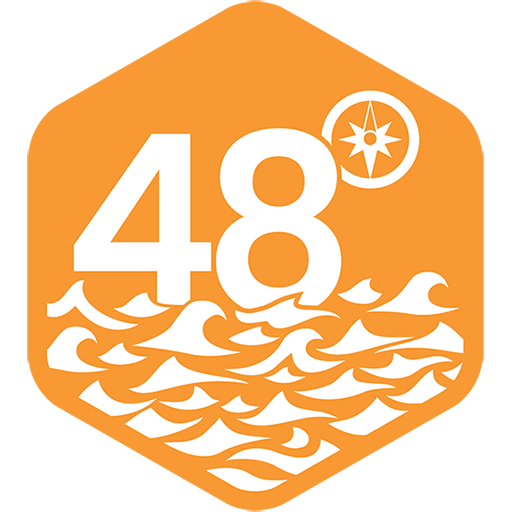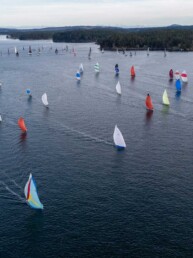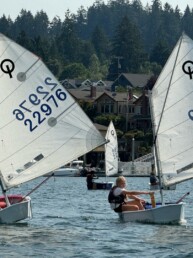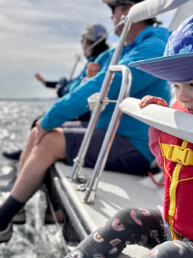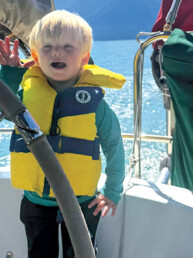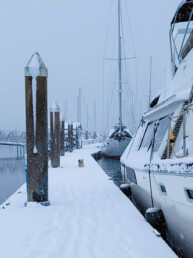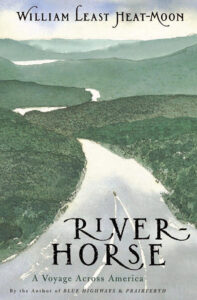 When it comes to describing the nuances and challenges of many hobbies and careers, their single-word title often falls short of conveying the actual requirements of the endeavor. My career as a teacher, for example, required far more skills than simply teaching, like classroom management, collaboration, and record keeping, to name just a few. Upon retiring, I found that my woodworking hobby was more about measuring, patience, and design than cutting and planing wood. Similarly, in the past few years of boating on Puget Sound, I have discovered that sailing is not as much about trimming sails as it is about anticipating and responding to the wind, waves, weather, and mostly, my own limitations.
When it comes to describing the nuances and challenges of many hobbies and careers, their single-word title often falls short of conveying the actual requirements of the endeavor. My career as a teacher, for example, required far more skills than simply teaching, like classroom management, collaboration, and record keeping, to name just a few. Upon retiring, I found that my woodworking hobby was more about measuring, patience, and design than cutting and planing wood. Similarly, in the past few years of boating on Puget Sound, I have discovered that sailing is not as much about trimming sails as it is about anticipating and responding to the wind, waves, weather, and mostly, my own limitations.
I was reminded of this while reading William Least Heat-Moon’s “River Horse, A Voyage Across America.” The chronicle of his epic journey from the Atlantic Ocean to the Pacific on the most iconic rivers, lakes, and tributaries in the country is a story of planning, perseverance, and more than just a little bit of luck.
My recent completion of the epic tome happened to coincide with the process of selling Ariel, the Columbia 28 that my wife, Laura and I purchased upon moving to the Pacific Northwest from California a few years ago. As I say goodbye to our beginner boat, I find that Heat-Moon’s insights into his personal and physical struggles provided me with an introspective forum to review my own journey over the past three-and-a-half years of sailing—though in no way comparable to the Herculean achievement of the author and historian.
What struck me in reading Heat-Moon’s travel log was the battle, or perhaps dance, between failure and achievement, boredom and exhilaration, and fight or flight that was so prevalent throughout his adventure on a C-Dory 22 and sometimes, when the water depth was too shallow, a motorized aluminum canoe.
Coincidentally, a C-Dory is one of the boats that has caught my attention as a replacement for our old sloop, and a strong component of his journey that I found particularly relevant. Laura and I have been on the lookout for boats with enclosed cabins as we accept our inability to adjust to the cold winters of the Pacific Northwest. A C-Dory is one of many boat models that fulfills that requirement.
While our must-have list starts with warmth and comfort, Heat-Moon chose the vessel for its durability, size, and trailerability, since the journey across the country by water was often blocked by dams and shallow depths. Even the C-Dory’s 30-inch draft when loaded, and the scant eight-inch depth when empty was too much for several miles of shallow waterways during the spring flow, before the snows of the Rocky Mountains had turned to massive torrents.
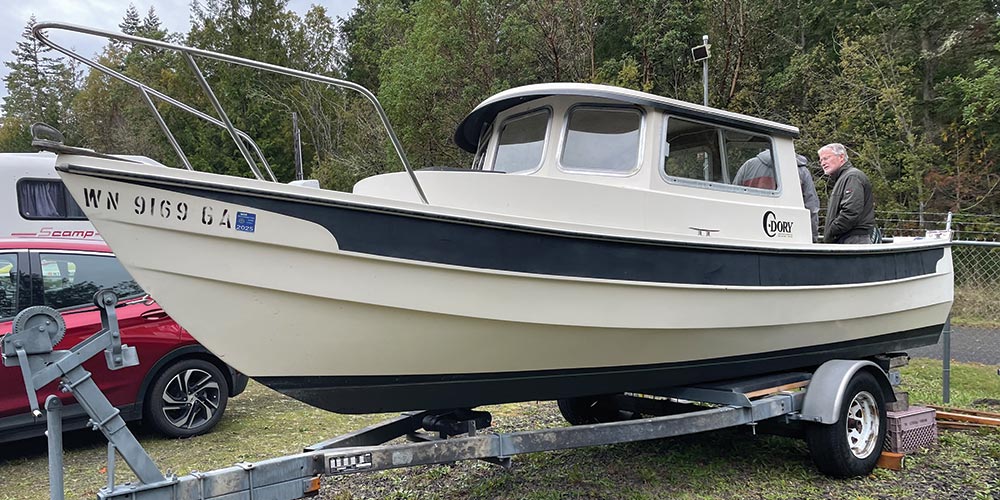
Heat-Moon describes his vessel as a cross between a Maine lobster boat with a turn-of-the-century harbor tug. He coined her name, Nikawa (Nee-kah-wah) from the Osage words, ni, river, and kawa, horse. The author reluctantly admitted that “the design of Nikawa made her look like an illustration from a children’s reader, and her lines sometimes drew people who—more often than we cared for—used the word ‘cute.’”
But the sweetly pejorative reference to her profile in no way applied to the small boat’s sturdiness. After a frightening thrashing on the tumultuous waves of Lake Erie, Heat-Moon telephoned the builder of Nikawa to ask whether she could continue to take such beatings. His response: “The C-Dory can take it. The question is whether her crew can.”
The incident on Lake Erie was one of several dangerous occasions that the crew of Nikawa encountered, as peril and risk often took over as a predominant feature of his undertaking. Heat-Moon confessed on more than one occasion, “Because moving water is—and I do not overstate this—death waiting, the pilot cannot just put the boat on cruise control, sit back with two fingers on the power-steering wheel, and daydream through a spell of monotony.”
While I never felt that our time aboard Ariel was a deadly risk, and I rarely piloted the old sloop with complacency and daydreams, our initial plunge into the world of sailing did carry a similar, though far less frightening concern and fear of the unknown. Our inexperience and lack of knowledge often resulted in either excitement or apprehension, or both simultaneously—apparently states of being not foreign to most sailors. Even Heat-Moon confessed that “Adventure was putting into motion one’s ignorance,” and a more fitting title for his book could have been “In Praise of Ignorance.”
The author-historian began his journey early in the summer of 1995, initially with three “companions:” his good friend, whom he refers to only as Pilotis; his boat, Nikawa; and The River, an indication of his respect for the natural entity upon which he lived and traversed for over three months.
Along the way, he picked up another traveler, “The Photographer,” who paraphrased my belief about misnaming hobbies and endeavors with a comment several weeks into the 100-plus day excursion: “It takes time to see that a river is not just about water.” Pilotis elaborated further by adding that the most difficult river that they traversed, the Missouri, “is like a Roman Deity—powerful, playful, cantankerous, lusty, profligate, changeable, dangerous, yet still interested in the humanity that approaches it.”
A few of those same descriptors may be said of Puget Sound based on our experience as we sailed a portion of the massive waterway with our small sloop over the past few years. Our home waters of Commencement Bay are often serene, calm, and majestic. But on rare occasions, we have witnessed whitecaps from 20-30-knot winds, currents surpassing 4 knots and more, and lightning strikes from afar.
One of our dock neighbors witnessed first-hand the unpredictable conditions on the Sound in late summer, as an unexpected and sudden wind storm battered his vessel and ripped his headsail into tattered shreds. Sailing singlehanded, as he usually does, put him in a dangerous situation. But thankfully, his nearly half-century of sailing experience provided him with the knowledge and expertise to pilot his vessel safely back to the marina.
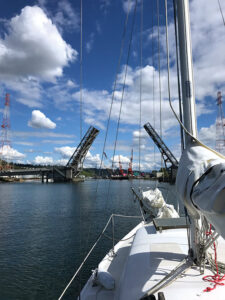
Laura and I have faced challenges far less imposing although, in the moment, insignificant obstacles often felt larger than they should have, which sadly was of little consolation. I recall our struggle through the churning cauldron off the shore at the north end of Point Defiance, with an engine problem that required a tow back into port, and wind chill factors that made us realize why so few boats ventured out during winter conditions like that.
At my age, I’ll never accrue the hours and nautical miles of my dockmate, nor those of Heat-Moon. But I think that in my brief time with Ariel, my opinion of the Sound is best characterized by Pilotis who confessed on the trip, “When this little ol’ excursion trip isn’t beating our brains out, it gives us one sweet and grand tour.”
Indeed, Laura and I did witness some “sweet and grand” times with Ariel, in the middle of one of the most beautiful geographical regions in the country. We shared the feelings of a sixth member of the crew, whom Heat-Moon referred to as “The Piper.” The musician’s late start on Nikawa excluded some harrowing experiences, which left him feeling that “on the river, it’s like there’s no Mondays—everyday feels like Saturday,” although the author quickly corrected him: “Except for those Saturdays that feel like a week of Mondays.”
Heat-Moon spent nearly two years formally researching the conditions along his 5,000-mile route before setting out—and even an afternoon sail on local waters can benefit from proper planning. While Laura and I adhered to this practice, we often fell just short of complete and thorough planning: the conspicuous absence of an extra dock line and shore power cord when mooring at away stations; improperly-rigged reefing lines for the main; gear incorrectly stowed and thus flung across the cabin in the event of unforeseen heeling; tide and current charts lost or ignored. It felt like no matter what we planned for, the unexpected lay waiting, echoed by the author, who pointed out the “ineptitude of planning for anything less than everything.”
But maybe more important than planning is acute observation and response, with a focus on problem solving. The author revealed that “the trick for novice adventurers is to learn quickly enough before inexperience does a journey in; I optimistically reckoned that each day of survival, each league of fast education, increased our chances of completing the voyage.”
I must sheepishly admit that I didn’t learn as quickly as I would have liked to. On more than one occasion Laura and I returned to the dock frustrated with sail management, current navigation, or wind assessment. There were times when I did feel like abandoning sailing altogether. Some of my frustrations may have been ameliorated had I internalized Heat-Moon’s cautionary wisdom at the onset of our time with Ariel. In my defense, however, some problems are unavoidable, and one’s knowledge is simply no match for the predicament, because, as the author laments, “on the water, the time between the easy life and disaster is but a moment.”
Indeed, even at the very end of our tenure with the sturdy sloop, with prospective buyers aboard Ariel for a sea trial, we found our confidence and patience tested one last time. After comfortably motoring out of the marina and preparing to cross the path of the Vashon Island ferry, Ariel’s usually reliable Yamaha engine sputtered and coughed before stalling out in a deafening silence, sending ripples of panic through us as the ferry blasted its horns in admonishment of our location. Only a favorable current prevented us from a front-page disaster, since the winds mustered nothing but a whisper, rendering our sails useless.
To add to our frustration, the small outboard performed perfectly not more than three days earlier, when we had taken Ariel for a spin to knock off a bit of sea grass and barnacles from her hull and rudder. Our eventual rescue came swiftly from Tow BoatUS, in the form of an amiable tow boat captain who expertly returned us to the marina.
Obstacles like this are usually accompanied by visceral frustrations on many levels, the greatest of which are revealed in epithets and tantrums. I was consoled by Heat-Moon’s awareness that “cursing is part of a Missouri River pilot’s proper and honored method of ascent; to go upriver without it is simply unhistorical, probably unhealthy, and certainly unlikely, so much so that even devoted southern Baptists and Missouri Synod Lutherans deem it less than a peccadillo.” Misery indeed loves company, and the author’s observation made me feel less worried about outbursts in the face of difficulties.
Still, in my time on the water, I have made headway into reducing irritations and challenges, perhaps affirmed by Heat-Moon’s motto from the Quakers. Posted on a wooden plaque near the helm of his C-Dory is the philosophy, “Proceed as the Way Opens,” a quote which offered him daily reminders of patience accompanied by thoughtfulness and observation.
In retrospect, I realize that as Laura and I became more adept sailors, we benefitted as much from our choice not to take Ariel out in less than favorable conditions rather than forcing an outing because it was on the calendar; in effect, only proceeding ‘as the way opened.’
Adding to the marvel of sailing were the unexpected, though frequent sightings of marine wildlife in the Sound. While we rarely saw orcas, we were thrilled by pods of porpoises, curious seals, fish, bald eagles, and osprey.
Echoing my appreciation for life in the Sound was a passage in “River Horse” in which the author wistfully lists the names of 28 fishes found in the Hudson, lamenting how impoverished the river would be without “stonerollers, horny-head chubs, comely shiners, …jacks, wrasses, puffers, and flounders.”
Heat-Moon ran across a cadre of characters on land as well. His moorings at towns along the river lead him to off-the-grid farmers, knowledgeable pub owners, and savvy Native American guides. His encounters were not unlike my experiences with club members, marina hosts, and fellow boaters on the Sound—all of whom added to my education on the water.
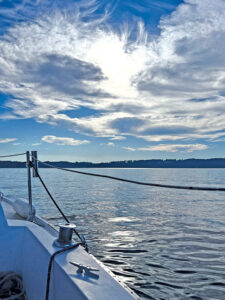
It’s easy to claim that Heat-Moon’s passage along America’s rivers is a metaphor for our journey through life. Sometimes we comfortably drift downstream, observing the people, places, and sights along the way or in our wake. At other times we struggle against the current, meeting resistance in the unexpected as well as the anticipated. We mark significant mileposts along the way, and plan for the next phase of our travel.
And yet, the end of an odyssey, whether it be literal or figurative, often leaves an unexpected void. Selling Ariel certainly makes Laura and me ponder our next undertaking on the water, and reflect upon the exploits that we had aboard the sloop. She was the perfect vessel for our novice sailing needs. And now that we have caught wind across her canvas, and waves beneath her bow, we are planning for a new adventure, though one clearly different from our initial foray into the boating world.
Heat-Moon describes this growth at his journey’s end so poetically. “I thought how far I was from where and when this journey began, how I was so distant from that fellow passing for me twenty months ago, the one so eager to learn the secrets of river passage… Our physical components change every seven years, so our brains are continuously passing along memories to a stranger; who we have been is only a ghostly fellow traveler.”
While it has not been seven years since I first stepped aboard Ariel, I do believe that I am “distant from the fellow” who I was forty months ago. And though my time on the water was nowhere near as impactful as that for Heat-Moon, I still feel a sense of achievement in my endeavors as a new sailor, with an empty slip providing an opportunity to think about the past and future.
When I was a teacher, summer vacation offered me a time of reflection and the mental space to make adjustments to my teaching practice. Now being temporarily boatless, I feel a similar sense of awareness. For Heat-Moon, the completion of his ocean-to-ocean voyage marked the end of a far greater life goal, leaving him to contemplate the future as well: “When our voyage was only memory, where would I wash up? Just where is the great delta of old river travelers? When the journey is done, quo vadis?”
Many of the members of our yacht club have confessed to “aging out” of sailing, acknowledging the physical and even mental demands that a sailboat requires. Laura and I are contemplating that reality for ourselves, despite our concerns about the noise, cost, and pace of a powerboat.
And once again the author offers his insight on that particular subject. He “never believed speed and ease are conducive to living fully, becoming aware, or deepening memory, a tripod of urges to stabilize and lend meaning to any life.”
Rather, Heat-Moon believed that challenging oneself in action and achievement alike, is “like rock climbing where the point is to go a difficult way, otherwise ascent is almost meaningless—the object isn’t just to get to the top but to get there in such a way you learn the nature of the mountain.”
I don’t know if I learned about the nature of Puget Sound, or sailing, or weather in my tenure with our Columbia 28. I can’t say that I took the road, or waterway, less traveled while sailing the old gal. Our journey wasn’t always difficult, and it wasn’t always about sailing. For me the adventure came in learning a little bit about the environment of the Pacific Northwest, and even more importantly, understanding my own nature as it faced the familiar along with the unknown, and the moments of uneasiness offset with times of peace, contemplation, and joy.
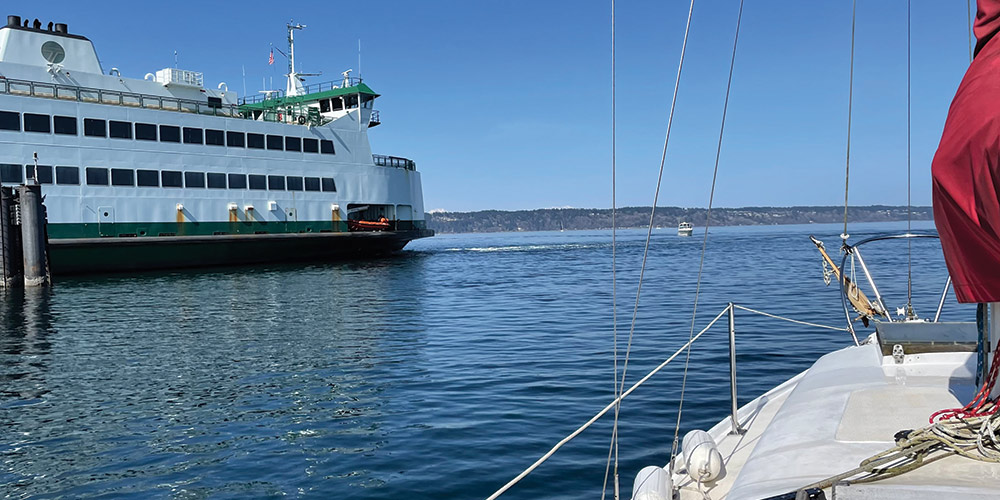
David Casey is a retired math teacher and semiprofessional woodworker and bass player. He plans on using his retirement to build a small sailboat and a kayak, and to explore the waters of southern Puget Sound.
